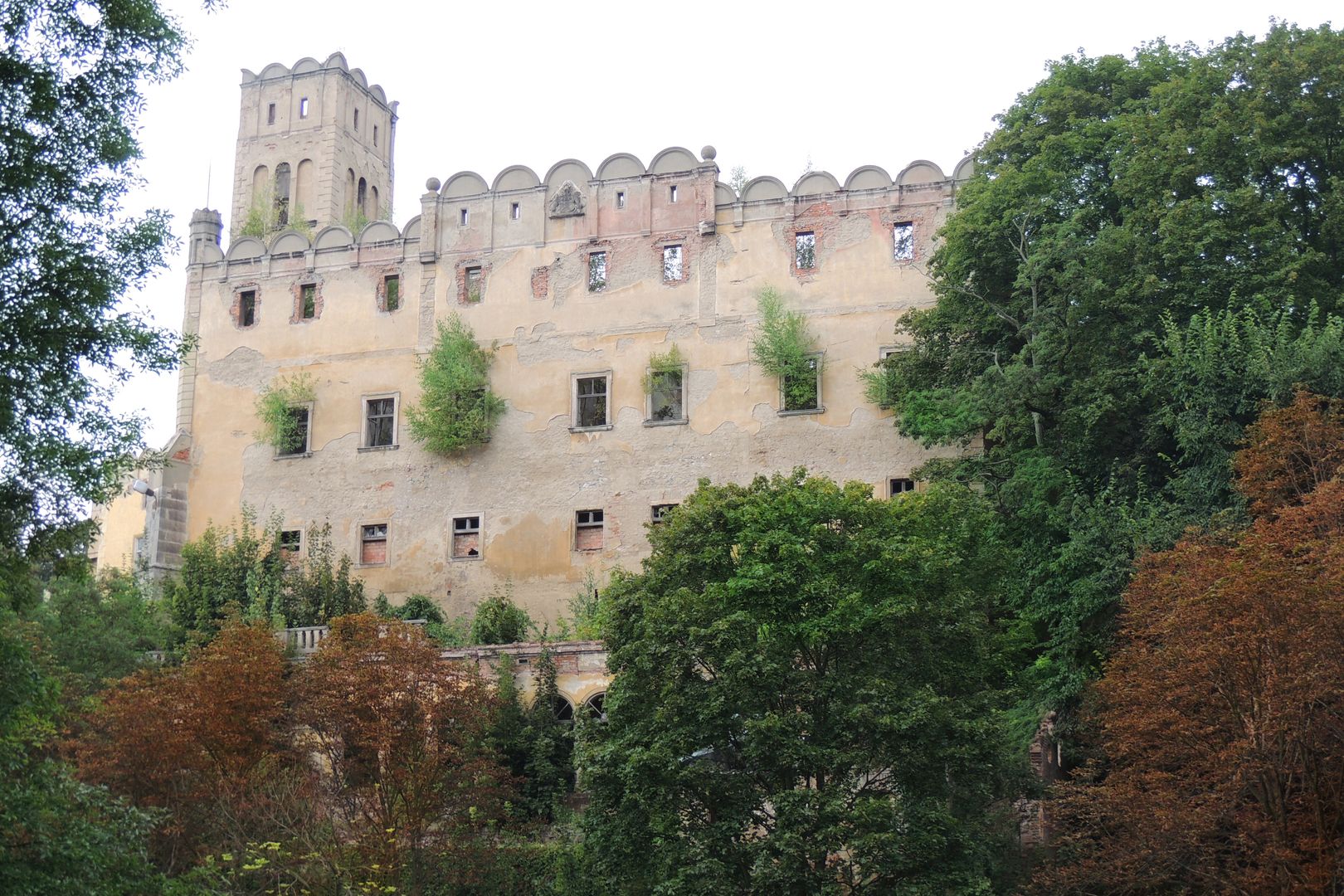Ratno Dolne Castle
7.05

Overview
Ratno Dolne Castle is a historic structure built around 1563 in the Renaissance style, constructed from stone and brick, designed on a rectangular plan measuring 14x22 meters, with a tower measuring 7.5 meters per side. The castle's architecture features modest, plastered elevations, a three-story structure with a mezzanine, and low gable roofs. The interiors follow a multi-bay layout, and many rooms have preserved cross vaults. A decorative element is the ornate portal with a triangular pediment, which bears the coat of arms of the Johnston Kroegeborn family and the date 1872, indicating significant renovations in the 19th century when the owners were Maximillian von Johnston Kroegeborn and his wife, Elisabeth. Adjacent to the castle are 17th-century terraced gardens and a former game preserve transformed into a landscape park in the 19th century. The castle was rebuilt several times, destroyed during the Thirty Years' War, and later reconstructed by Daniel Paschasius von Osterberg. In the 19th century, new owners, including Woldemar Johnston Kroegeborn, introduced a series of modernizations, such as the construction of a slender western tower and interior upgrades. After World War II, the castle was used by a state-owned farm (PGR) and as a vacation home. Unfortunately, in 1998, the castle suffered a tragic fire, leading to its ruin, and in 2006, it was transferred to the WKS "Śląsk Wrocław" company. Ratno Dolne Castle is thus an example of complex architectural history, struggles with time, and the contemporary fight to preserve cultural heritage.
Location
2025 Wizytor | All Rights Reserved